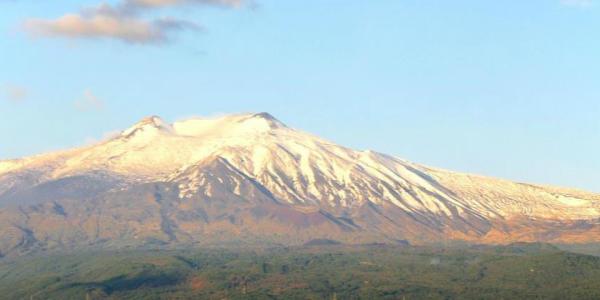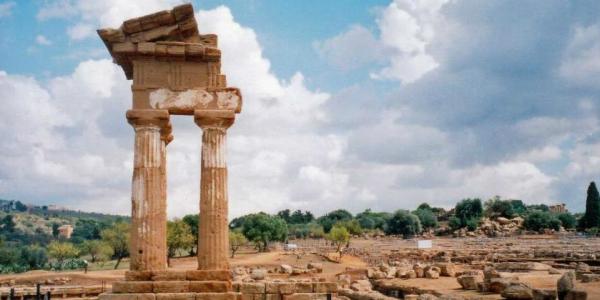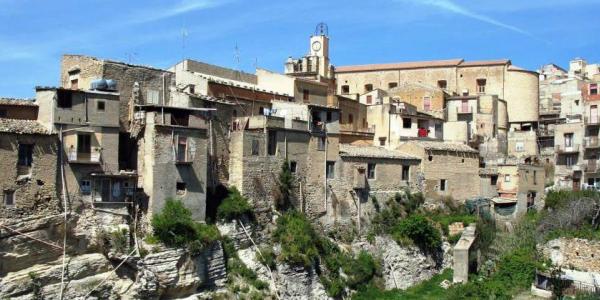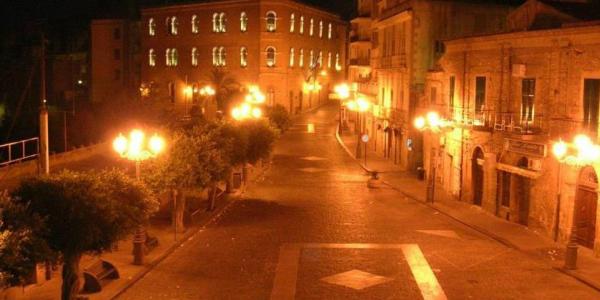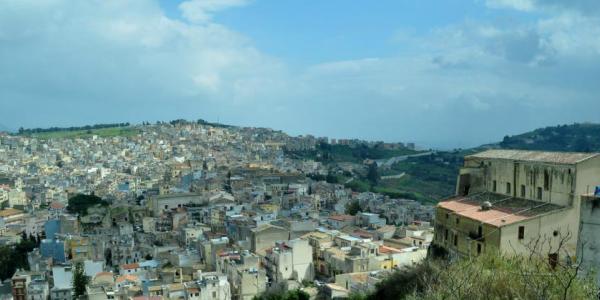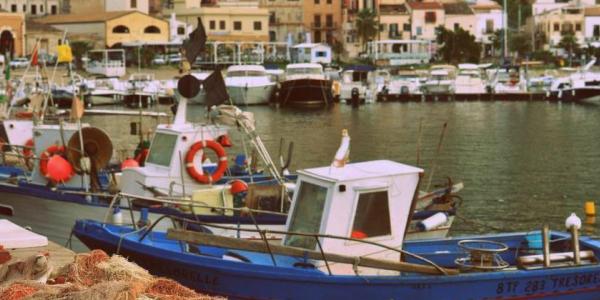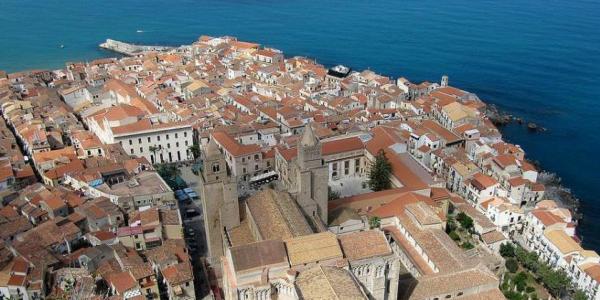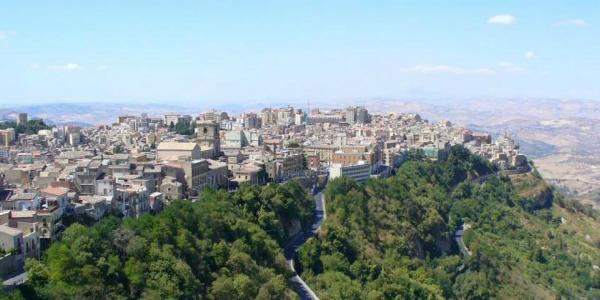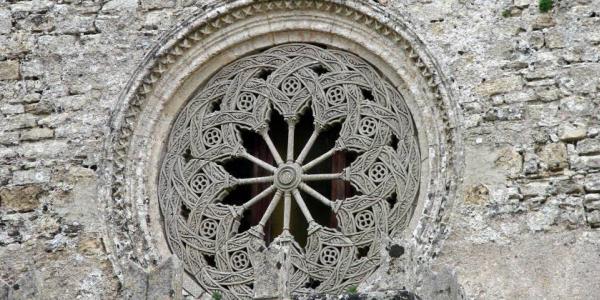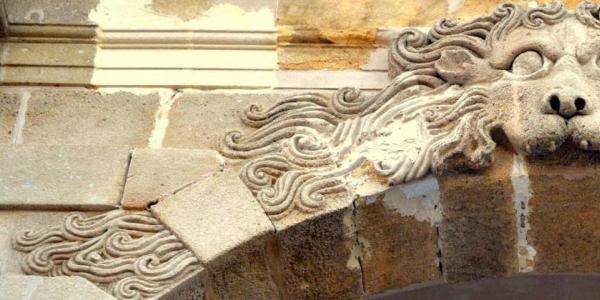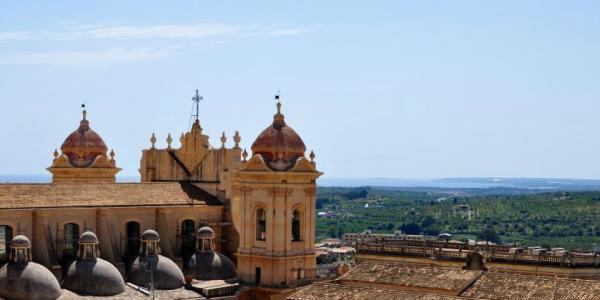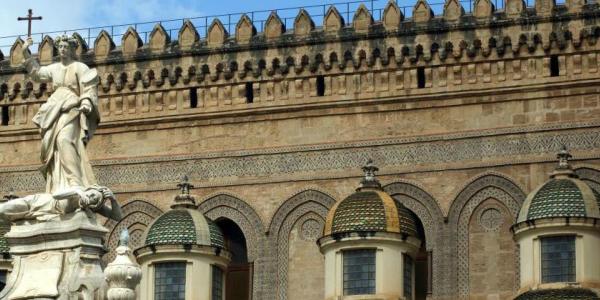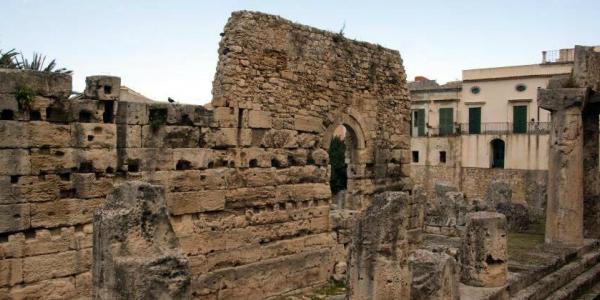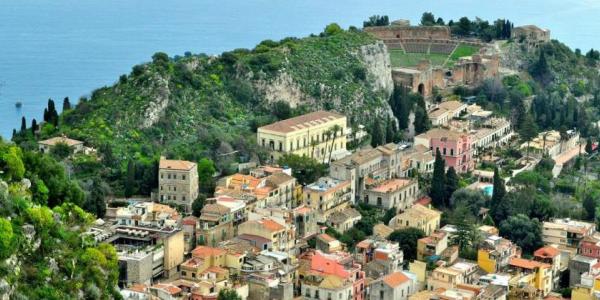The Arab-Norman itinerary includes the following monuments:
Norman Palace and Palatine Chapel
The Norman Palace, today the seat of the Regional Government, dates back to the period of Arab rule of Sicily in the 9th century. Only part of the original Arabic Palace remains intact, as the Normans restored the building and transformed it into a splendid palace.

Inside, there are several attractions worth seeing: the Palatine Chapel and Roger’s Throne Room evoke the glory of the Norman kingdom, decorated with mosaics with hunting scenes enlivened by stylized plants and figures.

The Palatine Chapel was built inside the Royal Palace, on the orders of King Roger II after his coronation in 1130 and houses the most splendid Byzantine mosaics. The Islamic tradition is represented by the wooden ceiling with 'muqarnas' (stalactites), which was carved and painted by Arab craftsmen, while the glowing mosaics which adorn the walls of the chapel are purely Byzantine.
Church of San Giovanni degli Eremiti
 6669499439_edbe24b3fd_o_rszx.jpg)
The Church and the Cloister of St. John of the Hermits (San Giovanni degli Eremiti) were built by Roger II between 1130 and 1148. The church is famous for its 5 red domes, typical of Arab craftsmen. Behind the church, there is a small cloister bordered by arches with twin columns with a garden in the centre.
 6669578197_444a7dc948_o_rszx.jpg)
Church of Santa Maria dell’Ammiraglio (La Martorana)
It remains one of the finest religious buildings in Palermo. It was completed in 1143 and in 1436 was ceded to the nuns from the nearby "Martorana" convent as their chapel, hence its other more popular name. It has been enlarged over the centuries, with a Baroque façade replacing the original. The mosaics at the Martorana, like those at Cefalù and the Palace Chapel, were done by a group of artists brought expressly from Constantinople to Palermo, who worked here between 1140 and 1155.
Church of San Cataldo
Next door to the Church of Santa Maria dell’Ammiraglio stands the mid-12th century church of San Cataldo. It has three red domes in a row, latticed windows and an elegant bare interior.
Palermo Cathedral
Palermo Cathedral is in the oldest most sacred part of Palermo, where the Phoenicians, the Romans, the Byzantines and the Arabs all erected their own places of worship. The Normans replaced the Muslim mosque with a Christian church. Built in 1184 in the Arab-Norman style, the interior features the tombs of Henry VI, Frederick II and Constance of Aragon, and also a silver urn that contains the relics of St. Rosalia, patron of Palermo.
On one of the columns at the entrance to the Cathedral there is a verse from the Koran and another column once supported the roof of a Roman temple.
The Zisa Palace
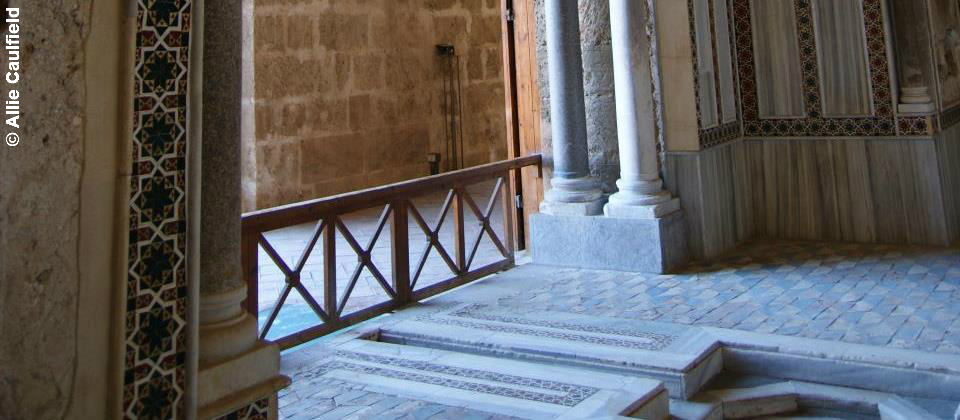
The name of this Palace derives from the Arabic “Aziz”, meaning “splendid”. It is considered one of the most magnificent Arab-Norman buildings and has recently been turned into a Museum of Islam with a collection of pieces and information about the Arabs in Sicily.
The Cuba Palace

This building is a parallelepiped construction on a rectangular floor-plan and was built by William II at the heart of the Genoardo Royal Park.

Palermo has a wealth of history and art, and there are many interesting places to visit. These include the Teatro Massimo in Liberty style, the International Museum Antonio Pasqualino, which has an excellent collection of puppets; Casa Professa, Palazzo Abatellis and Palazzo Chiaramonte-Steri, respectively the seats of the Modern and Mediaeval Art Gallery and the seat of the University of Palermo in the ancient Kalsa quarter. The Arabs established their government in this area and its narrow, winding streets later became a populated residential district. Finally, the fishing village of Mondello with its sandy crystalline beach and Liberty-style seaside villas is also worth a visit.



